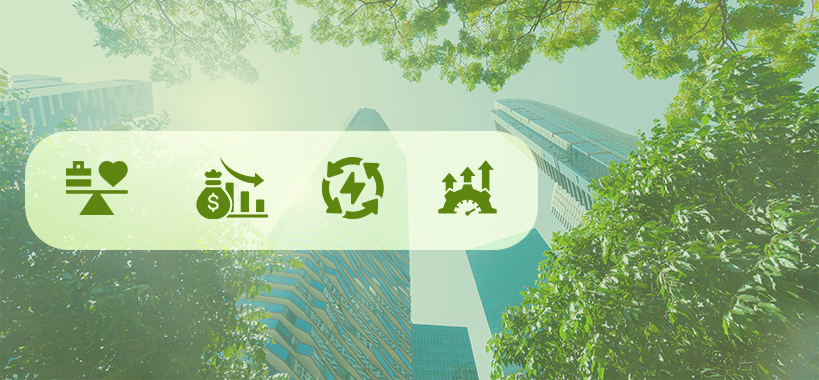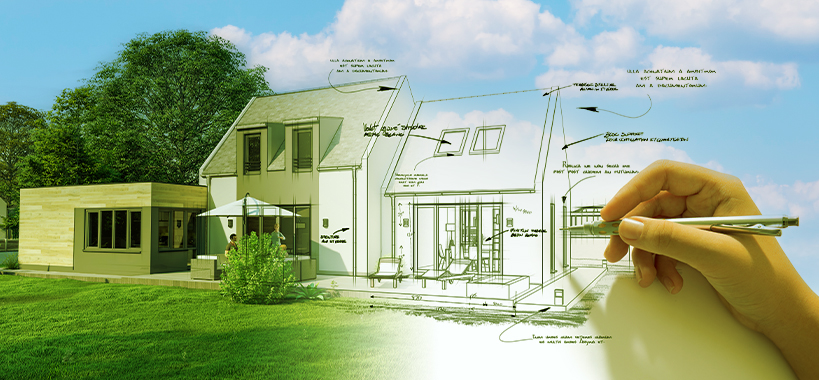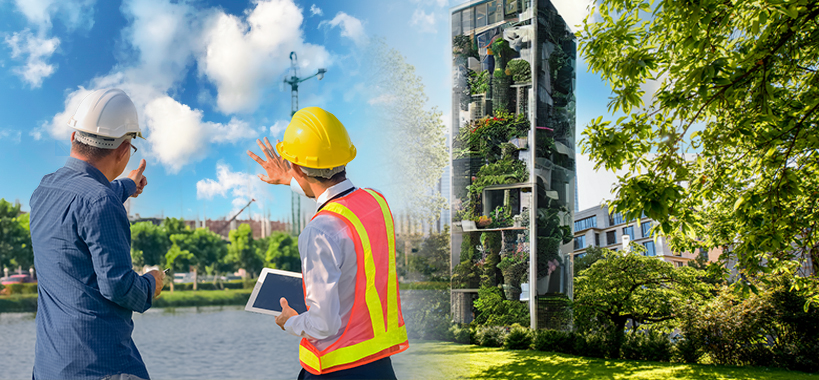Welcome to Skytree!

Green Architecture – A Step Toward Sustainable Building Design
Increased urbanization and the industrial revolution have increased energy consumption and waste generation, which are the reasons behind adverse environmental impacts. With green architecture, now there is an emphasis on designing structures that can use the maximum of natural energy sources.Green architecture solutions help mitigate the negative impacts of a building on the environment and economy. The four major factors dealt with by green architecture are energy, material, water, and health. Green building design and construction promote energy-efficient lighting, passive solar design, waste minimization, non-toxic material usage, rainwater harvesting, and many more for a sustainable building.
What Is Green Architecture & Its Significance

Green architecture refers to the design and construction of structures that minimize the forced overuse of energy sources other than solar or wind energy. The process ensures efficient use of natural resources- water, air, solar energy, and other materials, from design, construction, and operations to maintenance. It counteracts the humankind effect on earth through its sustainable approach and influences climate change and the environment. The significance of green building lies in the following:
Reduced Cost
A green architecture consumes fewer resources, from operations to maintenance. The consumption of lesser energy, such as lightning and water bills, and lower maintenance cost increases profitability.Energy Efficiency
The energy-efficient design of green buildings reduces their dependency on energy for basic utilities. For example, huge windows and ceilings reduce bring in natural sunlight and reduce dependence on artificial light.Material Efficiency
Green architecture uses reusable, renewable, recyclable, and non-toxic materials such as bamboo, straw, ecology blocks, etc. It generates as little waste as possible compared to traditional buildings.Quality of Life
These green architectures improve interior design elements like enhanced lightning sources, thermal conditions, ergonomic features, and upgraded air quality. All these factors contribute upgradation of health, stress level, and overall quality of life of its occupants.Factors to Include When Designing Green Buildings

A few specific factors to include while designing a green building are as follows.
Building Orientation
Building orientation is a passive design technique that defines the building positioning based on sun-path and wind patterns. The design planning with climatology orientation helps optimize the project heating and cooling system.Solar Control and Shading
Solar control and shading impact the energy efficiency of the building and can minimize one-fourth of the building’s cooling load. The shading devices can get designed considering solar orientation for minimum exposure to the sun in summer and allow sunrays inside the space in winter.Building Material Choices
Non-toxic materials in construction reduce the project’s environmental impact on transportation, and recycled materials minimize waste products. UV-reflective paints on exterior walls reduce the heat gain of the building.Building Envelope
A building envelope acts as a barrier between its interior and exterior, controlling the exchange of air, water, heat, and cooling. An envelope can be tight or loose based on a building’s location and the climatic condition of the place.Structure Design Efficiency
The selection of a structural system concerning the minimal weight of a structure supports minimizing the exhaustion of natural resources. We can further optimize and develop cross-sections, shapes, etc., of the building structure.Lightning and Water Efficiency
Energy-efficient lighting should get used for green buildings. It includes artificial lighting as well as natural resources. We need to regulate water consumption and maintain water quality for water efficiency.Renewable Energy System and Waste Management
A renewable integrated system such as a solar water heater and solar chimneys helps cool the inside temperature. Waste management gets done by implementing, reducing, recycling, and reusing the waste generated by buildings.Build a Sustainable Architecture with Skytree
Skytree is a premier architectural, BIM, and structural engineering services provider. The team at Skytree offers sustainable solutions to a wide range of projects across residential, industrial, commercial, hospitality, retail, and other sectors. With the expertise of BIM and Green architectural design, Skytree helps meet your sustainability goals, such as energy efficiency, waste management, cost-effectiveness, and reduced environmental impact.
Get in Touch
You will find yourself working in a true partnership that results in an incredible experience and an end product that is the best.
Call us on
+91 80 4145 4670
Email us
info@skytreeconsulting.com

